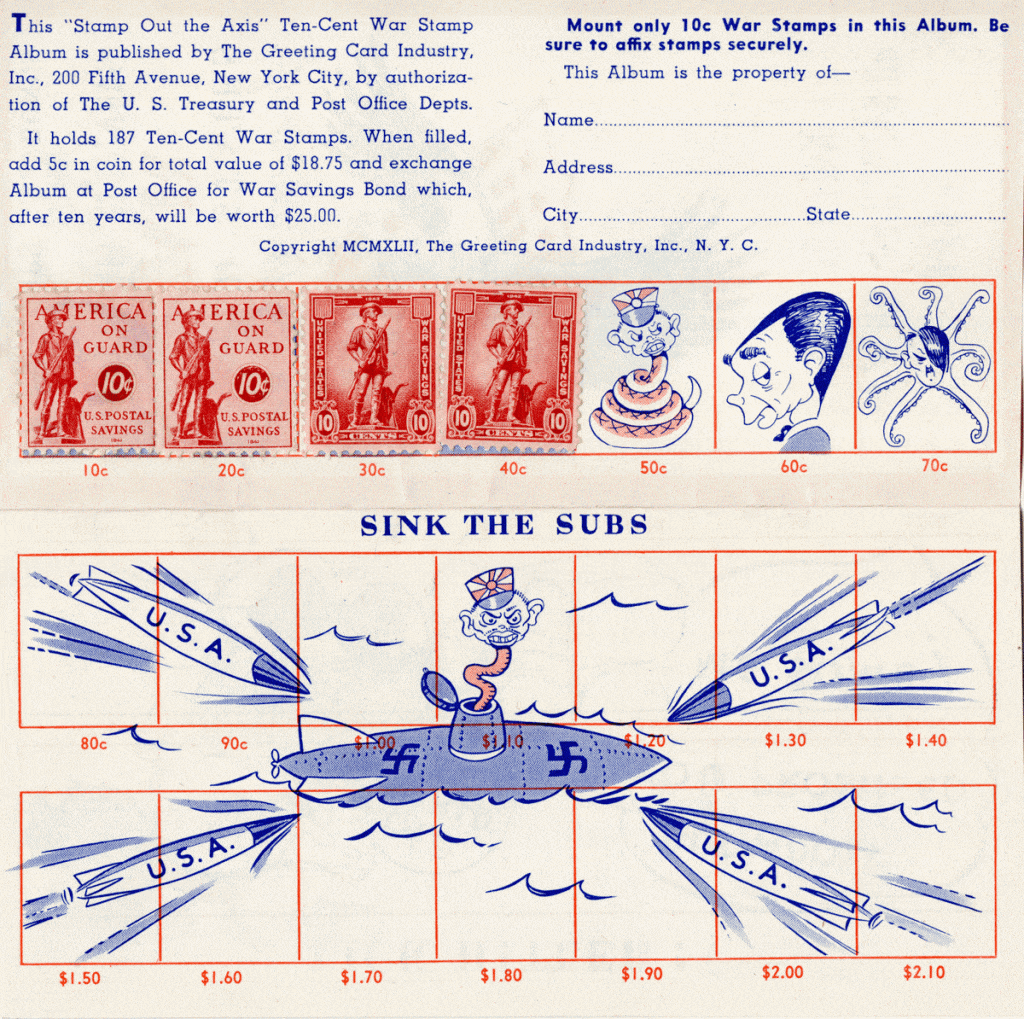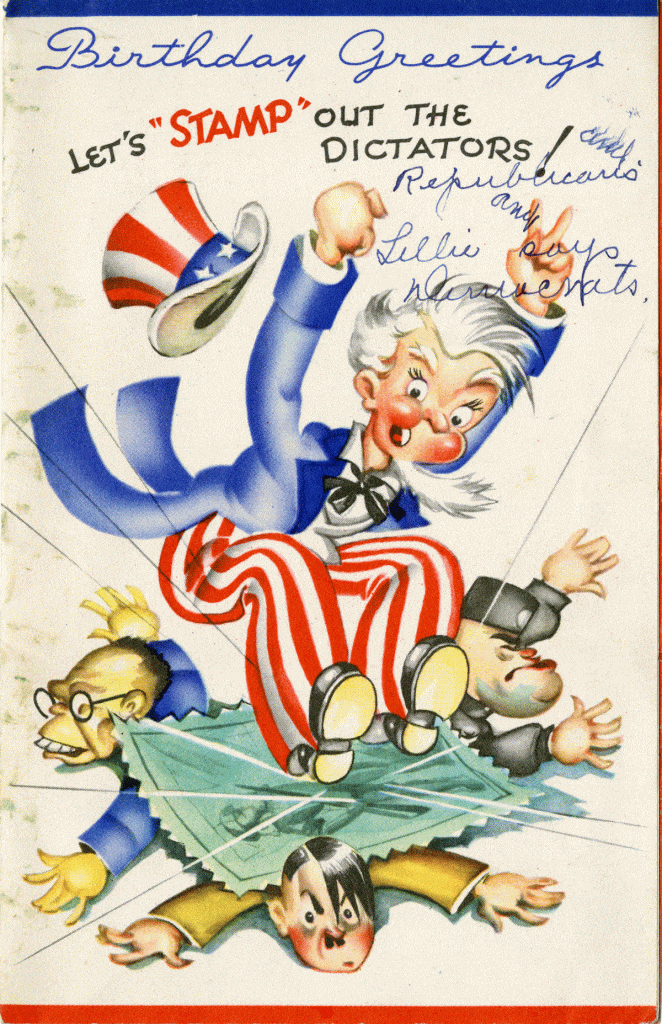
The United States funded World War II in part through the sale of bonds to the public. The bonds gave the government the capital it needed for the war effort and provided the public a return on its investment. As the bonds matured, interest grew on the borrowed money, due upon payout. But even the cheapest of these bonds were not always affordable for those of limited means.
In order to make bonds accessible to all Americans, the government sold “savings stamps.” This practice had first been introduced during World War I. In that global conflict, the public could purchase interest-bearing stamps at $4.12 which at maturity were worth $5.
For those who could not afford the price of the interest-bearing stamp, “thrift stamps” were available for twenty-five cents each. Once collected and affixed to official thrift cards, full cards could be used to purchase an interest-bearing stamp.
Interest-bearing stamps were phased out by World War II, but the concept of thrift stamps was reintroduced. During the Second World War, stamps were purchased at face value and collected in booklets which were then used to buy bonds. A full ten cent booklet like the one pictured here was worth $18.70. A frugal saver could use his full book, plus an extra nickel, to buy a bond which would be worth $25 at maturity.
Mail carriers, post offices, participating retailers and, in Park City, the Egyptian Theatre, all sold savings stamps. To promote stamps and bonds, the government invested in advertising and education campaigns. The Park Record published a weekly “Defense Bond Quiz” provided by the US Treasury, which served as a series of answers to frequently asked questions.
War savings stamps were an affordable way for many people across the country to invest their money in the war effort a little at a time. Promotional efforts that encouraged Americans to purchase stamps and bonds usually focused on patriotism and a sense of service. Sam Raddon, editor of the Park Record, published this poem to pull at the heartstrings of Parkites:
“S Stands for Sam, our big uncle’s
name
T is for tanks, they’re right in the game
A is for America, land of the free
M for the Men we’ve sent over the sea
P stands for patriots, war workers all
S is for service, when we answer the call.”
Pictured is a birthday card to a member of the Paxton family, long-time Parkites. The card contains a ten-cent war stamp album is evidence of a robust promotional campaign for the savings stamps and war bonds.

Credit: Park City Historical Society and Museum, Leland Jerome Paxton Collection